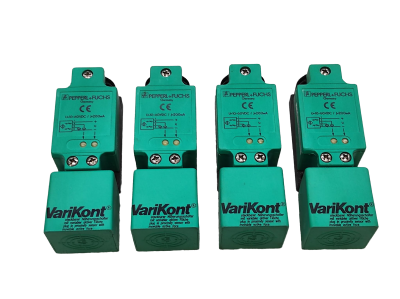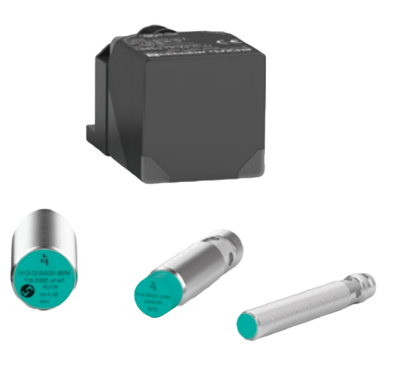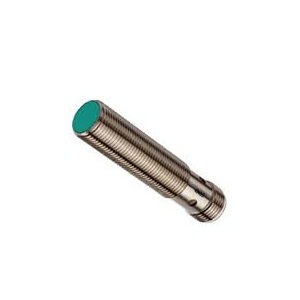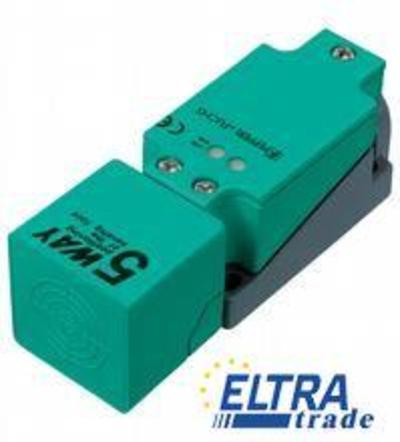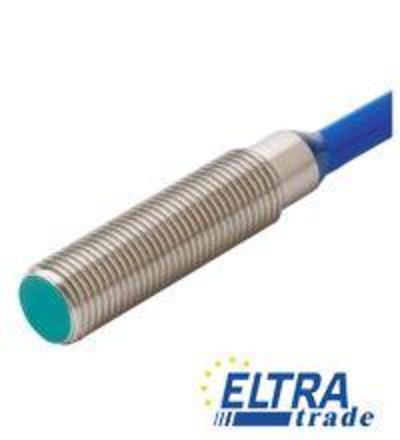Pepperl+Fuchs NJ - NE Rectangular sensors
pepperl fuchs nj15
- Output signal: switching, analog, frequency, digital
- Installation type: flush, inclined, angled
- Sensing surface material: metal, plastic
- Sensing surface size: from 10 to 100 mm
- Standards: CE, UL, CSA, ATEX, IECEx
- Comfort series
- 20 mm flush
pepperl fuchs nj
- Sensitivity: 10 to 300 mA/m.
- Deviation: 0 to 20 mm.
- Interruption frequency: 0 to 300 Hz.
- Pulse mode: from 1 to 20 Hz.
nj10
- Degree of protection: IP66 or IP67
- Threaded mounting: М30
- Operation frequency: up to 300 Hz
- Operating temperature: -25 to +70 °C
Pepperl+Fuchs NJ10-30GM-N-V1Inductive sensor
- Cylindrical type
- Housing diameter: 30 mm
- Housing material: Stainless steel 1.4305 / AISI 303
- Rated operating distance: 10 mm
- Connection type: Connector M12 x 1 , 4-pin
- Output type: 2-wire, Installation: flush
- Type of voltage: DC
nj20
- Classification: 500 V or 1000 V
- Temperature range: -25°C to +85°C
- Response time: 10 µs to 100 µs
nj30
- Degree of protection: IP67
- Switching frequency: up to 150 Hz
- Storage temperature: up to +85 °C
nj40
- Lifespan: up to 100 million on/off cycles.
- Distance to target: up to 100 mm.
- Inductive coil: 15 mm.
- Viewing angle: 120 degrees.
- Switching frequency: up to 100 Hz.
pepperl fuchs nj5
- Sensitivity: 5 to 100 mA
- Accuracy: ±0.5 to ±1.0 mm
- Repetition rate: 1 to 100 Hz
- Viewing angle: 10 to 180 degrees
- Mounting height: 5 to 50 mm
Pepperl+Fuchs NJ2.5-14GM-N-V1-Y21146 inductive sensor
- Sensor type: inductive
- Working distance: 2.5 mm
- Degree of protection: IP67
- Type of output: NAMUR
Inductive sensor
Inductive sensor
Series: Rectangular type, Housing diameter: , Housing material: brass, nickel-plated, Rated operating distance: 3 mm, Connection type: Connector M8 x 1 , 3-pin, Output type: 3-wire, Installation: quasi flush, Type of voltage: DC
Rated operating distance: 40 mm, 2-wire, screw terminals
- Sensor with dead stop
- Comfort series
Series: Cylindrical type, Housing diameter: 5 mm, Housing material: Stainless steel 1.4305 / AISI 303, Rated operating distance: 0.8 mm, Connection type: cable PVC , 2 m, Output type: 2-wire, Installation: flush, Type of voltage: DC
Series: Cylindrical type, Housing diameter: 5 mm, Housing material: Stainless steel 1.4305 / AISI 303, Rated operating distance: 0.8 mm, Connection type: cable PVC , 10 m, Output type: 2-wire, Installation: flush, Type of voltage: DC
Series: Cylindrical type, Housing diameter: 5 mm, Housing material: Stainless steel 1.4305 / AISI 303, Rated operating distance: 0.8 mm, Connection type: cable PVC , 5 m, Output type: 2-wire, Installation: flush, Type of voltage: DC
- Comfort series
Series: Cylindrical type, Housing diameter: 18 mm, Housing material: Stainless steel 1.4305 / AISI 303, Rated operating distance: 1.5 mm, Connection type: Connector M12 x 1 , 4-pin, Output type: 2-wire, Installation: flush, Type of voltage: DC
- 1.5 mm flush
- Usable up to SIL 2 acc. to IEC 61508
The inductive proximity sensor is one of the most commonly used types of proximity sensors today and is used in many industrial systems, consumer electronics, and other devices. Below we discuss Pepperl+Fuchs NJ - NE rectangular inductive sensors.
Key Features of Pepperl+Fuchs NJ - NE Rectangular Sensors
As the name suggests, an inductive proximity sensor is a non-contact device that uses an electromagnetic field to detect metallic targets within its range.
A typical inductive proximity sensor circuit consists of three main components: an internal coil, a soft iron core, and an oscillator. The inner coil is wound on a ferrite core and connected to the oscillator circuit.
A rectangular sensor consists of several sensors that together form a rectangular array. Its benefits include increased sensitivity and reduced slowness in movement. Pepperl+Fuchs NJ - NE rectangular inductive proximity sensors are best suited for detecting metals, especially ferromagnetic materials and conductive objects. Depending on the material of the target, you can also use them to detect iron, steel, aluminum, and other metals.
A rectangular sensor consists of several sensors that together form a rectangular array. Its benefits include increased sensitivity and reduced slowness in movement. The required number of revolutions can be directed between its different edges. The cores act in such a way that they do not have a negative magnetic effect on each other. They are electrically connected in series. Ferromagnetic cylindrical cores of length and diameter form the edges of the rectangular sensor.
Ferrite bars are installed at each corner of the base structure to utilize a closed ferromagnetic path. This ferromagnetic material is type B1 ferrite with an initial relative permeability typically around 2500.
This product is a very accurate sensor for motion control applications. One of the goals of designing and manufacturing this sensor is to control the precise movements of a light-based inspection system that measures the presence of defects in the installation of parts.
Its small size, low cost, wide performance range, and accuracy allow it to attract more customers than other sensors used for similar applications. The rectangular inductive proximity sensor is designed for rooms where it is impossible to install a cylindrical proximity sensor. These sensors are available in various types, so the sensitivity distance of large samples in this category can be up to 60mm.
Therefore, a rectangular sensor is used where a long sensing distance is required, and installation space is limited. The rectangular inductive proximity sensor has a robust metal or plastic housing with high protection values, a large sensing area, and an extensive sensing range.
The advantages of a rectangular sensor include the following.
- High accuracy
- High switching speed
- Long service life
- It can be used in a variety of harsh environments
- Small size and compact design - total volume less than cubic inches
- Low costs
- Easy to implement and use - high-precision linear measurements using low-cost microcontrollers
- Wide operating range
- The high signal-to-noise ratio makes working in noisy and signal-rich environments easy.
There are several factors to consider when selecting the correct range of inductive proximity switches. These include the size and shape of the target, its material composition, and other application-specific parameters.
Installation and Configuration of Pepperl+Fuchs NJ - NE Rectangular Sensors
Next, we would like to give you some tips on the installation and configuration of sensors rectangular from Pepperl+Fuchs.
- Make sure you select the right NJ - NE rectangular sensor for your application. Consider factors such as sensitivity range, operating conditions, output type (analog or digital), and any specific requirements for your manufacturing process.
- Mount the sensor securely in the desired location using suitable mounting hardware. Make sure the sensor is properly aligned for optimal sensor performance. Follow the instructions in the product manual for proper installation.
- Connect sensor wiring to your industrial control system. This process may include connecting the power supply (DC voltage), ground, and signal wires. Pay attention to the correct polarity and colors of the wires to avoid connection errors.
- After installation and configuration, perform a thorough test to ensure that the sensor is working properly. Verify that it detects objects within the specified detection range and that the output signals behave as expected. If your application requires calibration, follow the calibration procedure described in the product documentation.
- Always follow safety regulations when working with industrial sensors and automation equipment. Make sure the installation of the sensor complies with safety regulations and does not pose a risk to personnel or equipment.
- Check and maintain sensors regularly to ensure reliable performance. Clean the sensor lens or sensitive area as needed to prevent dust or debris from accumulating which could affect its performance.
Applications of Pepperl+Fuchs NJ - NE Rectangular Sensors
Here are the most popular applications for Pepperl+Fuchs rectangular sensors
- Precise motion control.
- Optical switches.
- Hard disk management.
- semiconductor lithography.
- Semiconductor measurements.
- Movement mechanisms.
- medical diagnosis.
- MEMS accelerometer.
- Rotary axis measurement.
- Seismic monitoring.
